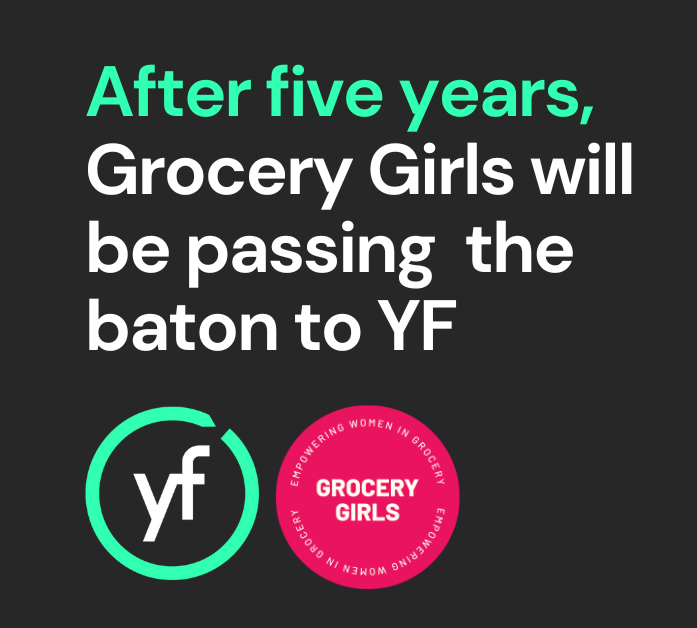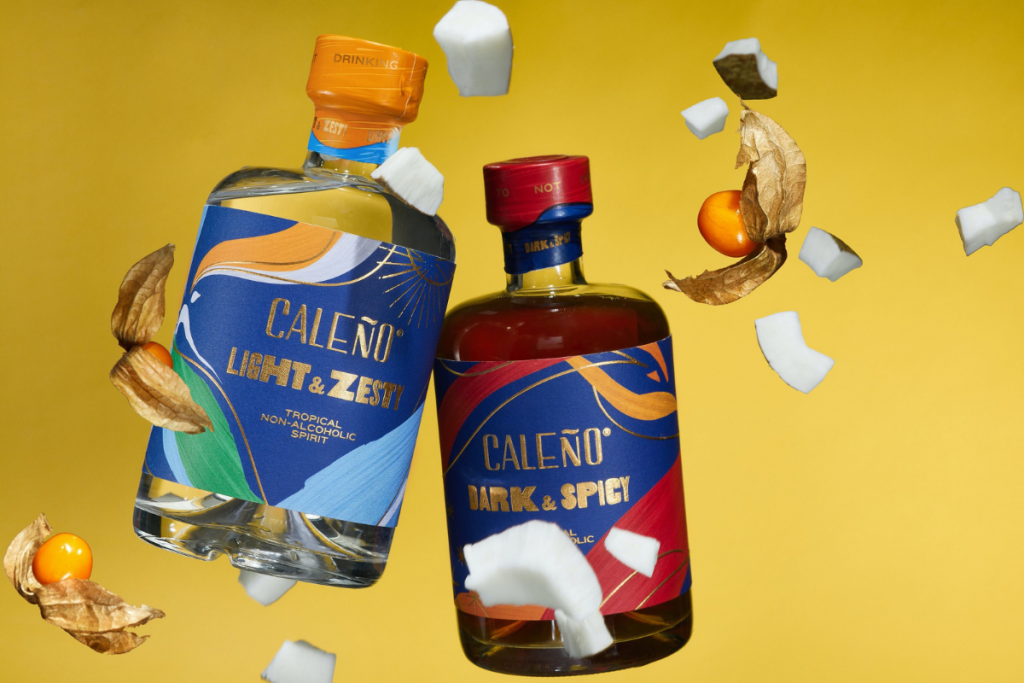
Subscribe to
YF mailing list
Subscribe today to keep informed of any important industry news and exclusive insights on how you can scale and strengthen your business.

Having worked in the drinks industry for years, in January 2019 Ellie Webb launched non-alcoholic spirits brand Caleño, its bold and colourful range inspired by vibrant South American culture, and designed to challenge the stereotype that swapping out booze could not be just as fun and delicious. Here she talks to YF about the size of the Lo No opportunity, the need for education and Caleño’s plans for the next year.
I had the idea to do something like this when I did Dry January for the first time back in 2017. I worked in the drinks industry at the time, and that can sometimes mean Christmas parties that are quite boozy, so come January I wanted a bit of a detox. I still wanted to go out and see my friends and be sociable, and have drinks, but I didn’t want alcohol. I really struggled to find something that I wanted to drink. Normally I ended up with a diet Coke or a glass of water, which just wasn’t exciting at all. That spurred me on to think about why the drinks industry was lacking so much in alcohol-free when from what I could see it was a really innovative, exciting space. That’s what led me to creating Caleño.
Sure. The first is Light and Zesty. It’s a blend of citrus and spice and predominantly tropical botanicals. We use some well-known ingredients, like pineapple and papaya, but also some lesser known ingredients, like Inca berries, which are exotic fruits grown in the rainforest. We distil that mix for two days, quite slowly so as not to damage the flavours, then leave it to mature for another two weeks before we bottle. That process is the same for Dark and Spicy, but with different ingredients. We use pineapple, some toasted coconut, cola nuts, some fresh lime and also ginger to give a little heat. Light and Zesty we recommend pairing with your favourite tonic water over ice, and Dark and Spicy is brilliant with ginger ale or soda water and lime.
I was adamant I wouldn’t put something out into the market unless I was really happy with the quality. It just wasn’t an option. I ended up doing a lot of in-market research. I probably visited 150 bars in Bristol and London, just took to the streets with my prototype bottles, spoke to bartenders and got them to try it. Some of them let me come in for the evening and talk to their customers about it too. That was really valuable in giving me confidence but also improving the liquid so I went through lots of iterations until I landed on the right flavour, and could launch.
I’ve said it from the beginning. The Lo No space has a humongous opportunity in the wider drinks space. I liken it to where plant based and veganism was a couple of years ago. Two to three years ago I think less than half a percent of people were vegan and it’s now 5-6%. You’re starting to see a very similar trajectory with alcohol-free and people moderating their alcohol intake. A lot are choosing to drink mostly at the weekends, but moderate their consumption Monday to Thursday, a little like Meat-Free weekdays, and the flexitarian movement. I see it following a really similar path. What’s exciting is that we’re only at the beginning of that journey.
There’s a wide variety of people that buy into alcohol-free, and it’s across a wide demographic as well. What threads that audience together is a focus on their physical and mental well-being. At the younger end of the spectrum they just aren’t really bothered about drinking. They’re really into exercise, but still want to socialise with friends. And at the older end of the spectrum there are people cutting back for health reasons. They can’t sustain that couple of glasses of wine per night and so want to introduce more alcohol-free alternatives into their week. So there are different motivations. We as a brand target those in their mid-20s to mid-30s because we can’t target everyone, but we have a really broad range of customers.
You’ve seen the non-alcoholic beer space come on quite a lot in the last couple of years. It was initially dominated by the big brewers and now you’ve got some really exciting independent brands coming through. Our category of non-alcohol spirits is a really exciting space too. Late last year we brought out ‘Dark and Spicy,’ a dark liquid of which there aren’t many in the market right now so that’s a really exciting space. Where there’s room for improvement is the wine space. It’s a huge category, and there’s a few people doing good things, but at the moment there just aren’t enough producers in that space.
We’re very focused on spirits at the moment, and not looking to branch into beer or wine just yet. What we’re interested in at the moment are RTDs. We can cater to people at home or in a bar with our 50cl bottles. What we can’t do is capture that moment where people are on the go and just want something to put in their bag or take on a picnic.
For a long time awareness has been a challenge. The market has been made up of a lot of smaller brands, and you’re now seeing bigger brands, like Gordon’s and Tanqueray, bringing out alcohol-free ‘gins’. That is starting to combat low awareness. Then there’s the need for education as well. When you talk to a lot of people about Caleño being a non-alcohol spirit, they don’t instantly understand what that means so it’s having to unpack the process behind it, how long that takes, the ingredients we use, and the time and effort that’s gone into creating that liquid. They’re really difficult to make. It took me a long time, and I know some of the bigger producers have spent four or five years, if not longer, trying to perfect those liquids so that the taste is good enough to get to market.
That education is key in terms of explaining that to the consumer so they’re willing to pay a higher price for it, rather than regarding it at soft drink level which is a quick consumable. Helping them understand how you drink it as well, what measure, what mixers you pair it with, all that kind of stuff. We need to get better at doing that, and the industry needs to continue to push that education agenda.
Surprisingly we’re ahead of the curve on innovation. Most innovation in Lo No has come from the UK. I don’t know whether that’s because we love our drinks and love socialising and that spurred the need for non-alcoholic alternatives. Certain countries like Spain are ahead of the curve in terms of draught alcohol free beer, the same in Germany. But they’re not as advanced in the non-alcoholic spirits space. Retailers in places like Germany and Spain won’t stock as comprehensive a range of non-alcoholic products as the UK. So we’re ahead of the curve but others are catching up pretty quickly.
If you are a high-growth FMCG business like Caleño Drinks and want to hear more about how YF can help support you on your growth journey then get in touch with the YF team here.
Would you like to be kept informed of any industry news, insights or updates about the YF Services? You can quickly subscribe to our newsletter here.
Subscribe to our mailing list to stay in touch with the latest news, insights and updates from YF.
Subscribe today to keep informed of any important industry news and exclusive insights on how you can scale and strengthen your business.
Our Preferred Suppliers are a selection of businesses that we have vetted and trust to recommend to our brands. We have negotiated discounts or deals with many of them.
Access to the list and discounts is a benefit to Community members only.
Not a member yet? Find out more here